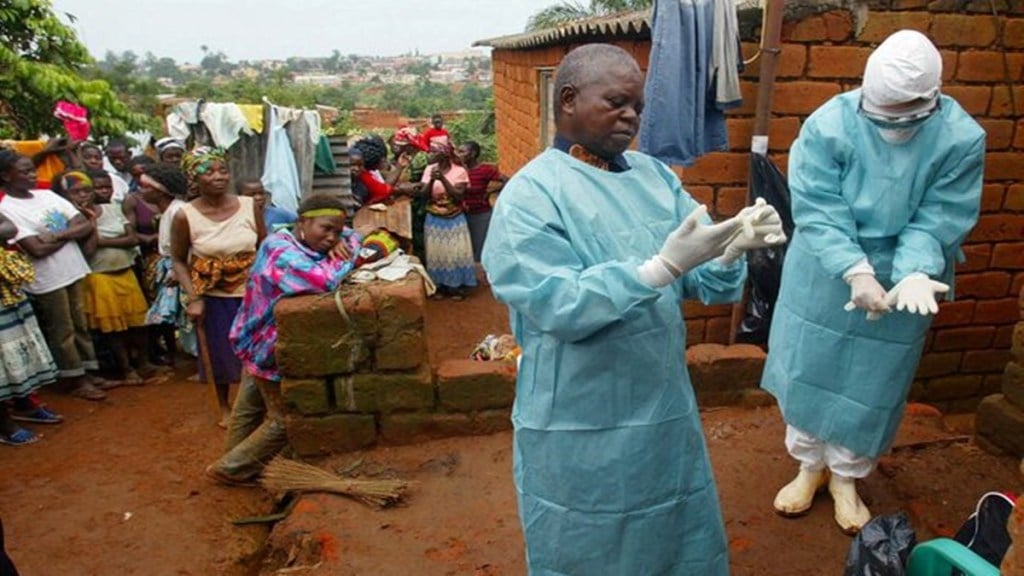Bleeding Eye Virus: As the cases of Marburg virus continue to rise, public health officials across the world are monitoring the outbreak. At least 66 people have been infected and 15 people have died from an outbreak of Marburg virus disease (MVD) in Rwanda as of November 29, according to an update from the country’s Ministry of Health.
Marburg virus disease (MVD), formerly known as Marburg haemorrhagic fever, is a severe, often fatal illness in humans. The average MVD case fatality rate is around 50 percent. Case fatality rates have varied from 24 percent to 88 percent in past outbreaks, as per the World Health Organization (WHO).
Meanwhile, a warning has been issued to travellers against the spread of Marburg or ‘bleeding eye’ virus along with mpox and Oropouche fever in 17 countries.
What is ‘Bleeding eye virus’?
Marburg is a rare but “severe hemorrhagic fever that can cause serious illness and death,” the U.S. Centers for Disease Control says, adding that there is no treatment or vaccine for it. But, if detected early, supportive care with rehydration and symptomatic treatment improves survival, according to the Africa CDC.
According to the World Health Organization (WHO), both viruses are part of the Filoviridae family (filovirus) to which Orthoebolavirus genus belongs. Though caused by different viruses, Ebola and Marburg diseases are clinically similar. Both diseases are rare but have the capacity to cause outbreaks with high fatality rates.
MVD was initially detected in 1967 after two simultaneous outbreaks in Marburg and Frankfurt in Germany, and in Belgrade, Serbia. According to WHO, initially, human MVD infection results from prolonged exposure to mines or caves inhabited by Rousettus fruit bat colonies.
“Once introduced in the human population, Marburg virus can spread through human-to-human transmission via direct contact (through broken skin or mucous membranes) with the blood, secretions, organs or other bodily fluids of infected people, and with surfaces and materials (e.g. bedding, clothing) contaminated with these fluids,” the global health agency stated.
Moreover, healthcare workers have frequently been infected while treating patients with suspected or confirmed MVD.
What are the symptoms of ‘Bleeding eye virus’?
According to Cleveland Clinics, symptoms of Marburg happen in two phases. The first phase of symptoms lasts five to seven days and includes:
- Fever.
- Chills.
- Severe headache.
- Cough.
- Muscle or joint pain.
- Sore throat.
- Rash. This might have raised and flat areas (maculopapular).
You might get a little better for a day or two, then additional symptoms start. The second phase of symptoms can include:
- Abdominal or chest pain.
- Vomiting.
- Diarrhea.
- Dizziness.
- Unintended weight loss.
- Bloody poop or vomit.
- Bleeding from your nose, mouth, eyes or vagina.
- Confusion.
Seek immediate medical attention if you have these symptoms.
How does ‘Bleeding eye virus’ spread?
Marburg virus spreads through contact with body fluids of infected humans or animals.
Body fluids include:
- Blood.
- Pee (urine).
- Poop (stool).
- Spit (saliva).
- Human milk.
- Semen.
- Vaginal fluids.
You can also get it from surfaces, objects or medical devices that are contaminated with the virus, Cleveland Clinic revealed.
How is ‘Bleeding eye virus’ treated?
There’s no specific treatment or cure for Marburg virus. Providers can try to manage your symptoms, treat any complications and keep your condition stable. They might give you:
- Oxygen.
- Intravenous (IV) fluids.
- Treatments for specific symptoms, like pain medications.

